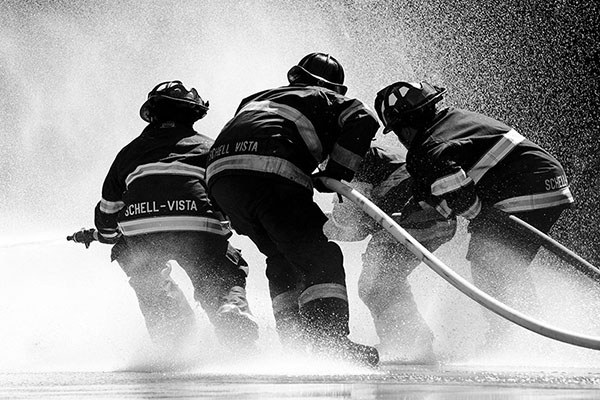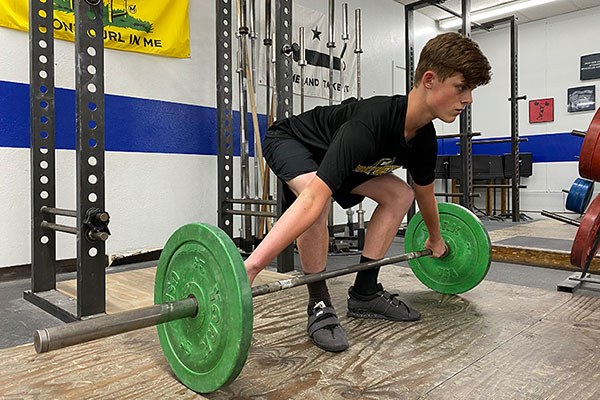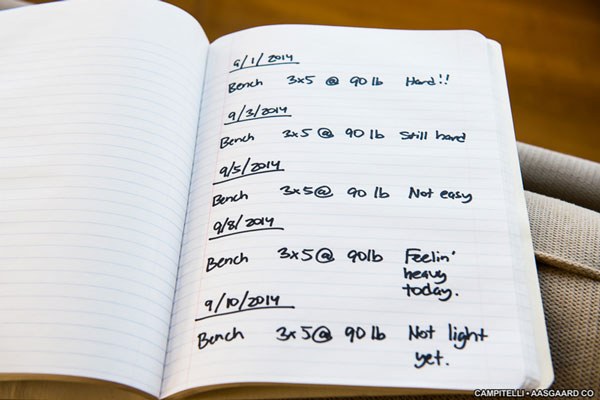Firefighting and The Two Factor Model
by Grant Shymske | July 09, 2024
The fire service is simultaneously a family and a professional team,
and in that spirit each member tries to contribute what they can to
make the team better. I have only been a firefighter for about three
years now, but I have been a professional strength coach for over a
decade, so I have been making efforts to contribute on that front.
What I have noticed in my efforts to implement a solid strength
program at my fire department are the striking similarities with the
common myths and misconceptions so commonly encountered in the
fitness industry.
Rip’s paper on The Two-Factor Model (TTFM) is one of the most useful and actionable intellectual tools Starting
Strength has produced, right alongside The Novice Effect, and
establishing a useful definition of strength. Understanding TTFM
gives a strength coach the ability to detect bullshit training fads
and misguided programming quickly and effectively; it is an
indispensable tool for your coaching toolbox. While TTFM was
originally framed in the context of sports performance, it could be
easily reasoned that the same principles apply to physical skilled
trades like firefighting as well.
Walk into any firehouse
and there will be a stack of magazines on the common room table or on
the top of the toilets. In almost every one of them there will be a
section touting the latest workout routine “Especially designed for
firefighter fitness!” – whatever that means. Invariably in these
firefighter-specific workout routines there are also advertisements
for fitness certifications, claiming to make you a personal trainer
specially educated in the nuanced and hyper-specific fitness
requirements of a firefighter.
Last year, my
department was sold an equipment package for testing prospective
firefighters known as the the Firefighter Physical Ability Test –
FPAT. This package is essentially
some modified gym machines painted red with a cool name and retails
for a knee-buckling $35,000. It should be obvious that the myth of “profession-specific functional training” is just as pernicious
and profitable as the “sports-specific functional training” we
are all familiar with.
As with sports-specific
functional training, the phenomenology (what actually happens) does
not line up with the mythology these companies and programs are
peddling. Myself and my small but growing contingent of training
partners at the department follow the TTFM, meaning we train the
squat, deadlift, press, bench, and Olympic lifts and then we practice
our firefighter job requirements (throwing ladders, forcible entry,
moving hoseline, ventilation, searching, etc.).
Interestingly, we hold
many of the top scores on our department’s assessments. We crush
the FPAT, because the kettlebells, sled, and sledgehammer in the test
are like child’s toys to a strong person. We regularly score in the
top percentile in air consumption tests (a circuit of firefighter
tasks done in full kit on air, the goal of which is to accumulate the
most work possible on one cylinder of air), because the force
production required of the tasks is so far below our capacity that we
consume less air to complete them – on and on, example after
example.
The lesson learned here
is that a physical trade is no different than a sport. If you want to
be a better more effective firefighter (police officer, soldier,
whatever) it is most efficient to train human movement patterns in
ways that utilize the most amount of muscle mass over the greatest
effective range of motion to allow you to move the most weight – to
get stronger, and then go practice your profession the exact way that
you will be expected to perform your duties in the field. Hitting a
tire with a sledgehammer while in full kit on air neither makes you
stronger, nor does it make you better at venting a roof with an axe,
it just makes you tired and sweaty. It looks kinda like firefighting,
but that’s all.



